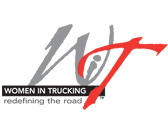At a time when many American car companies were floundering due to the recession, Tesla Motors became the first American car company to launch publicly since Ford Motors in 1956. Since then, Tesla Motors has built a reputation for having its finger on the pulse of the latest car technology. Electric cars and charging stations, dual motors, and self-driving cars are all part of Tesla’s top-of-the-line offerings.
 As you surely heard, in early May, Tesla driver Joshua Brown, age 40, was killed in a collision with a tractor trailer on a Florida highway. This was the first fatality resulting from the technology. Brown had put his Tesla Model S into the vehicle’s ‘autopilot’ mode, which is designed to handle the car during long stretches of highway driving.
As you surely heard, in early May, Tesla driver Joshua Brown, age 40, was killed in a collision with a tractor trailer on a Florida highway. This was the first fatality resulting from the technology. Brown had put his Tesla Model S into the vehicle’s ‘autopilot’ mode, which is designed to handle the car during long stretches of highway driving.
The feature has become quite popular, with its loyal following of Tesla drivers sharing video and photos of them sleeping, posing, and even playing air guitar as their autopilot feature gets them safely to their destinations. Brown himself had even uploaded video of his Tesla vehicle safely avoiding a collision, bringing a whole lot of positive press to the feature. (It is reported that at the time of the collision Brown was watching a Harry Potter movie.)
What happened? It seems that the car’s sensors simply failed to detect the truck – a large, white tractor trailer driving on a particularly bright day. Against the sky, the vehicle’s sensors simply didn’t see the truck, and the Tesla kept moving.
So this begs the question: does this prove that self-driving cars are still a long way off? Tesla claims that this is the first fatality in 130 million miles of self-driven road, where the average fatality rate for all miles driven is 1 in 94 million miles – arguably making the self-driving cars safer. Yet, Tesla critics point out that Tesla misleading markets the system as “Autopilot” and doesn’t implement security features as touching the steering wheel to ensure some level of driver participation and vigilance.
My take on it? I wonder how Tesla avoids the lawsuits. I imagine their test drivers sign certain waivers, but Joshua Brown wasn’t a test driver – he was an owner of a Tesla vehicle, who just a month prior to his accident, credited Tesla’s Autopilot for saving him in near miss he caught on video.
Everyone knows that buying a car comes along with a whole ream of signed paperwork – does buying a Tesla with the self-driving capability also come along with a waiver, absolving them of any guilt in case of a crash while using the technology? (After all, Brown’s Tesla sensors didn’t notice the truck, but neither did he.)
I’ve written about self-driving trucks before, and what it might mean for our industry in the future. There undoubtedly ups, downs, and challenges that come with figuring out this incredible new technology.
I don’t think Tesla is in any danger of going out of business, not as long as they can find a way out of potential high-dollar lawsuits. But as for commercial drivers? It seems like the immediate worry is staying alert for self-driving cars already traveling our highways.
Eyes on the road this weekend,
~Bob








